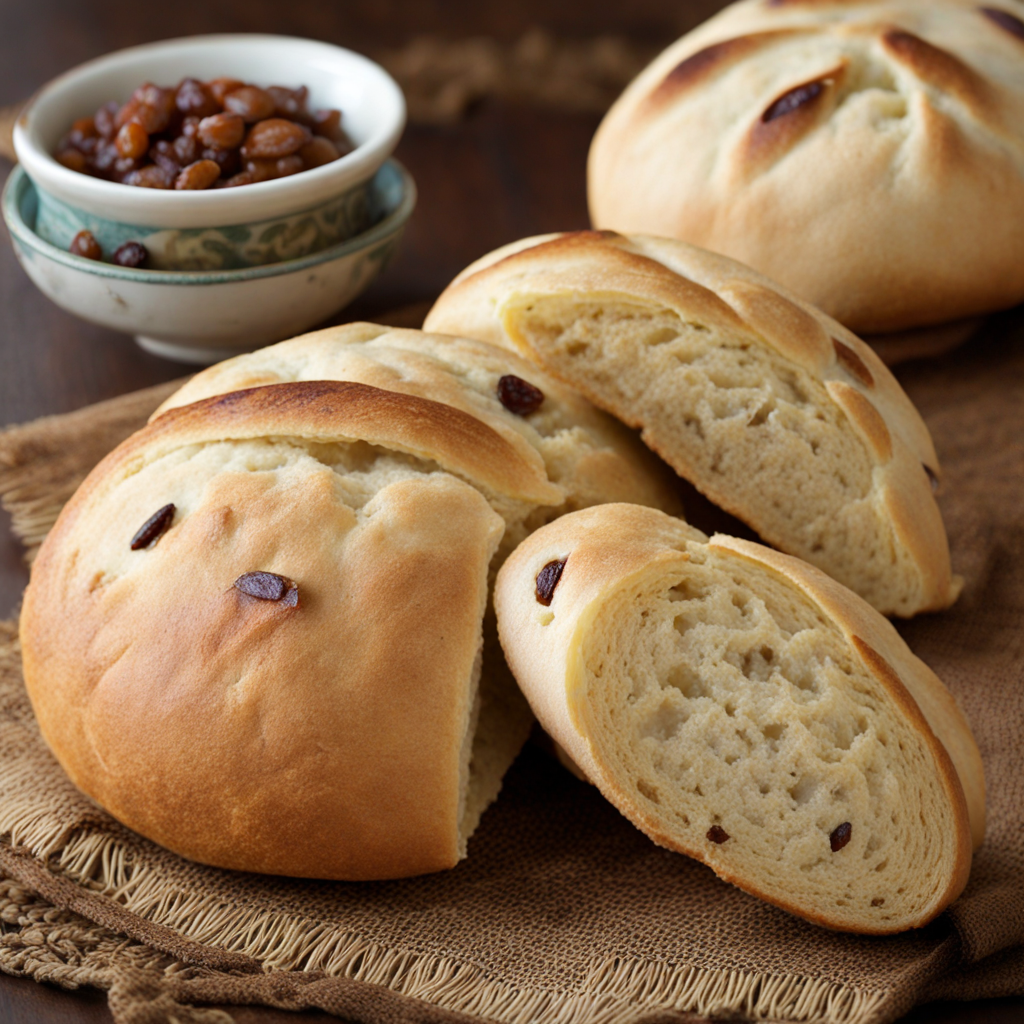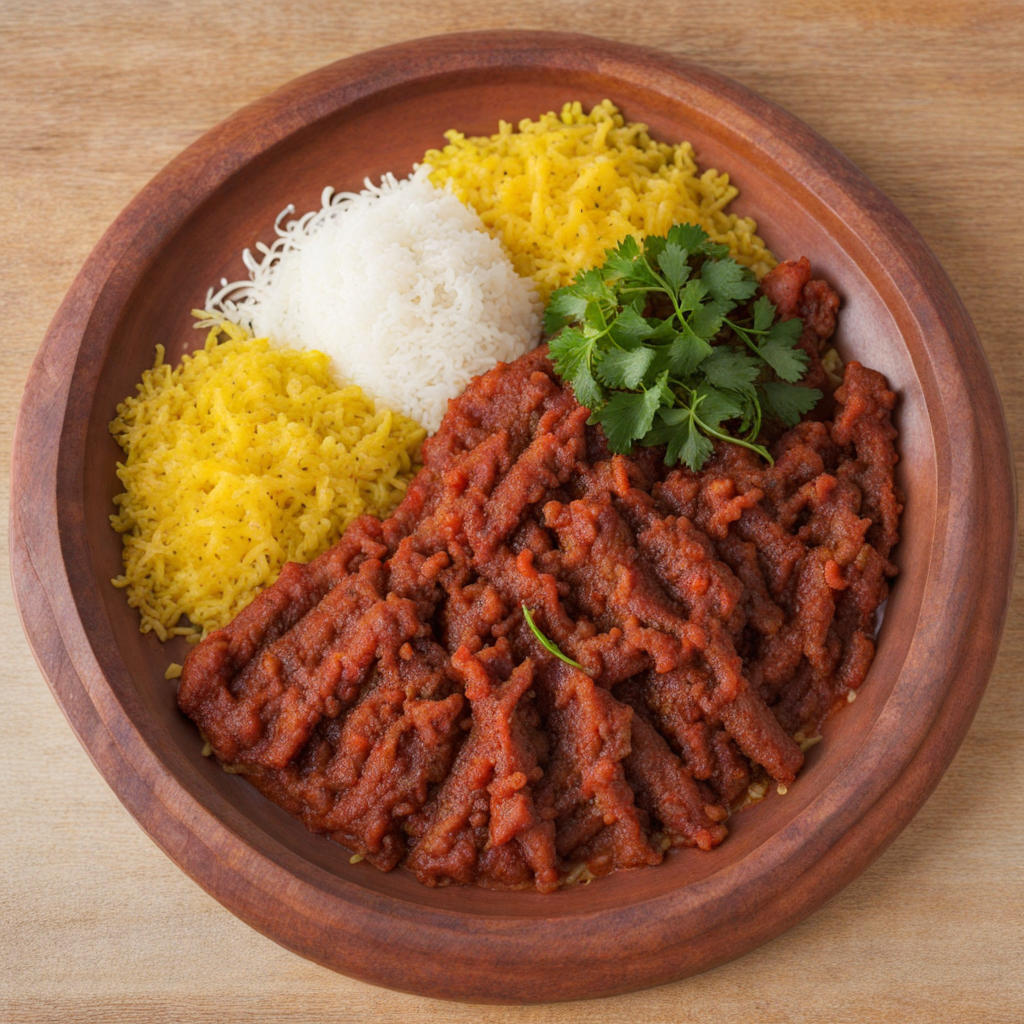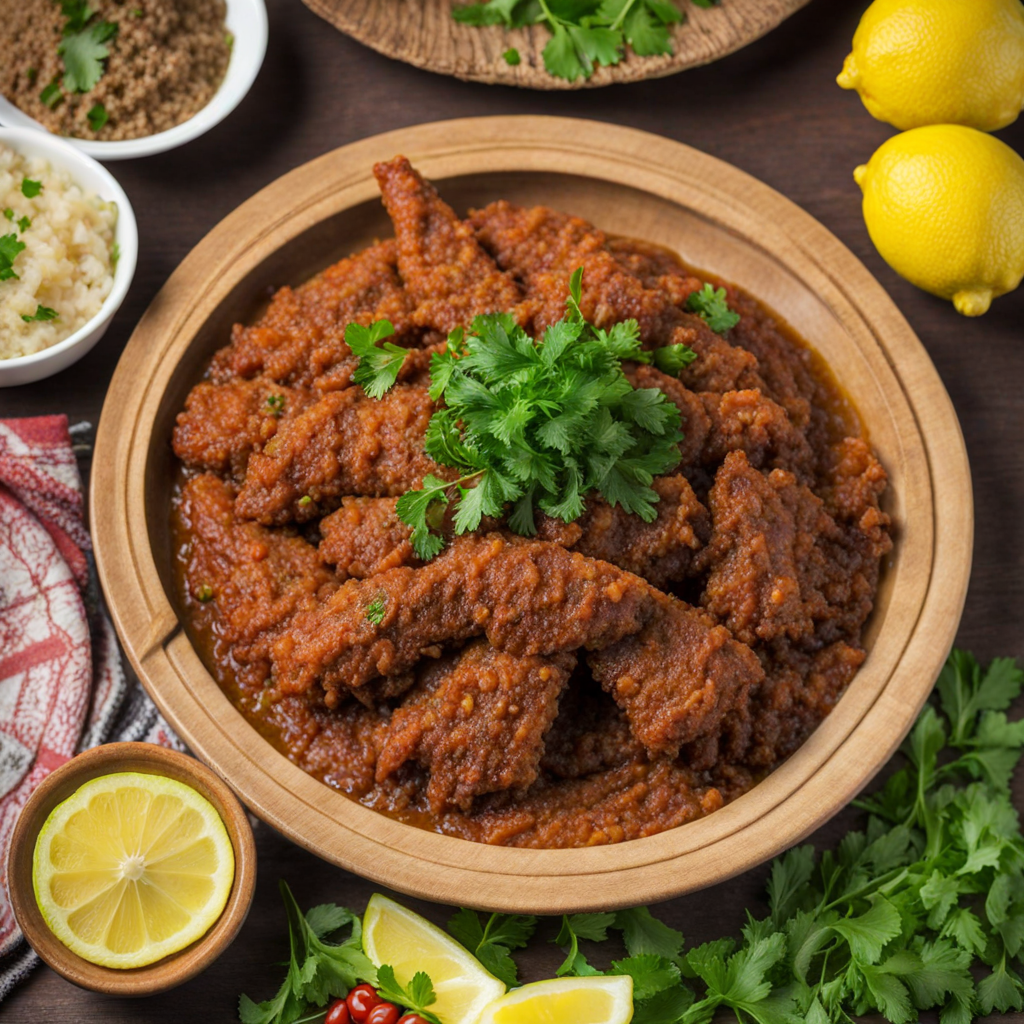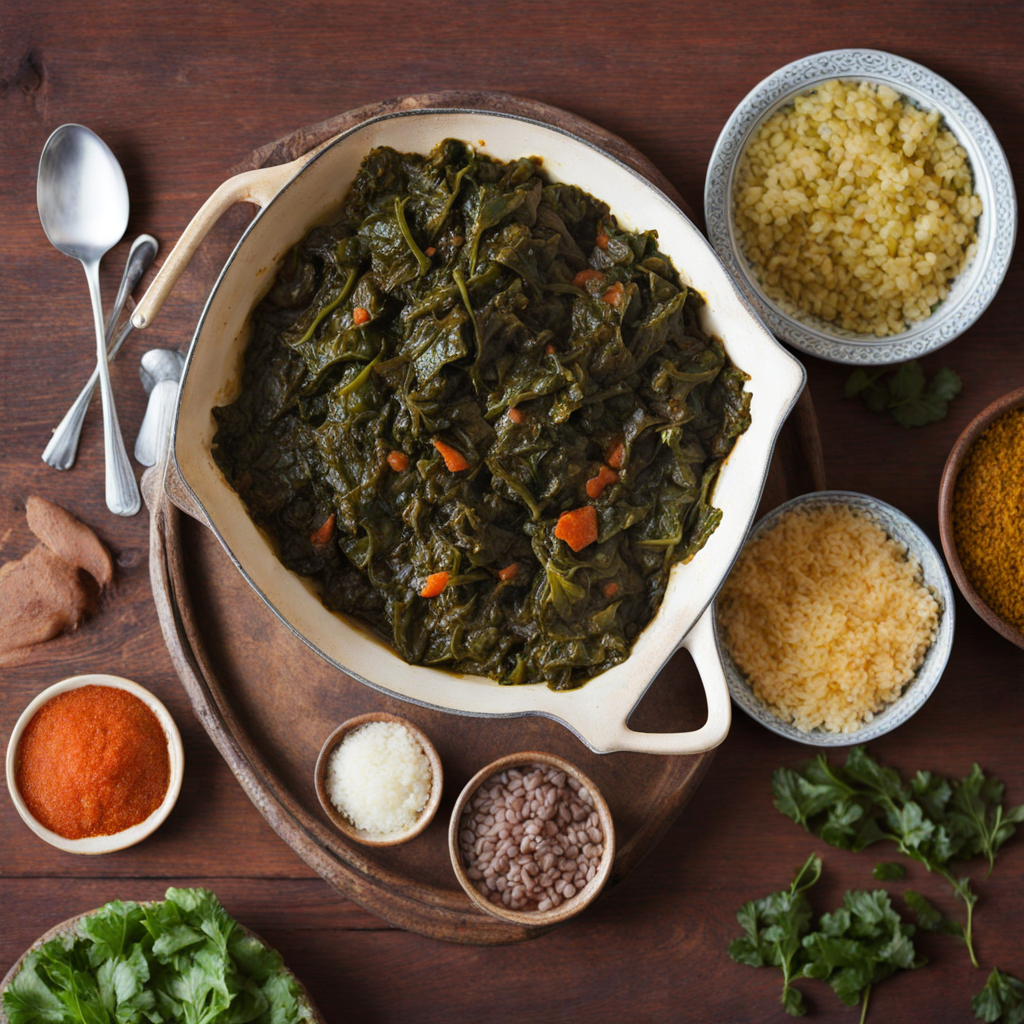Himbasha
Himbasha is a traditional Ethiopian bread that is both fragrant and flavorful, often enjoyed during special occasions and celebrations. Its unique preparation involves a delightful mix of ingredients, including flour, sugar, and anise seeds, which imbue the bread with a subtly sweet and aromatic profile. The dough is typically flavored with warm spices and sometimes enriched with eggs, giving it a rich, soft texture that is a joy to bite into. Baked to a golden perfection, Himbasha often features beautiful decorative patterns, making it not just a dish for the palate but also a feast for the eyes. One of the most captivating aspects of Himbasha is the way it is often infused with cultural significance. Traditionally, it is shaped in various forms, sometimes resembling a round loaf or even more intricate designs, symbolizing prosperity and community. During festive gatherings and family celebrations, the bread is often shared, serving as a centerpiece that brings people together. The act of breaking bread has deep roots in Ethiopian culture, and Himbasha embodies this spirit of unity and joy, making it an essential part of communal meals. The taste of Himbasha is a delightful journey of flavors, where the sweetness is perfectly balanced by the warmth of the spices. Each bite offers a soft, pillowy texture that melts in the mouth, while the hints of anise and other spices create a comforting and inviting experience. Whether enjoyed plain, with a spread of butter, or paired with honey and tea, Himbasha is a versatile treat that invites exploration and appreciation. For anyone looking to discover a new taste, Himbasha promises to be an unforgettable addition to your culinary adventures.
How It Became This Dish
The Journey of ሂምባሻ (Himbasha): A Culinary Delight of Ethiopia #### Origins ሂምባሻ, pronounced "himbasha," is a traditional Ethiopian bread that has captivated the taste buds of many both within and outside the country. This unique bread, often prepared for special occasions, has deep roots in Ethiopian culture and history. While the exact origins of himbasha are not entirely documented, it is believed to have emerged from the rich tapestry of Ethiopian culinary traditions dating back thousands of years. Ethiopia is known as one of the oldest nations in the world, with a history that intertwines with the rise of ancient civilizations. The preparation of bread has been a staple of Ethiopian life, with various forms made from different grains. Himbasha is typically made from teff flour, although wheat flour can also be used, reflecting the agricultural diversity of the region. Teff, a tiny grain native to Ethiopia, has been a significant part of Ethiopian diets for millennia and is known for its nutritional value, including high protein and fiber content. #### Cultural Significance Himbasha holds a special place in Ethiopian social and cultural life. It is often prepared for significant celebrations, including religious holidays, weddings, and family gatherings. The bread is typically shaped into a round loaf, often adorned with intricate designs or symbols that reflect the occasion for which it is made. This decorative aspect of himbasha showcases the artistry and creativity inherent in Ethiopian culture. One of the most notable occasions for preparing himbasha is during the Ethiopian Orthodox Christian holiday of Meskel, which commemorates the finding of the True Cross. During this festival, families gather to celebrate with feasting and communal activities, and himbasha plays a central role on the dining table. Its preparation and sharing signify unity, hospitality, and the importance of community, values deeply ingrained in Ethiopian society. In addition to being a celebratory bread, himbasha also embodies the spirit of hospitality. When guests visit a home, offering himbasha is a gesture of welcome and respect. The bread is often served with honey, butter, or a side of spicy stews, complementing its flavor and enhancing the overall experience of sharing a meal. #### Development Over Time As Ethiopia has evolved through centuries of political, social, and economic changes, so too has the preparation and consumption of himbasha. In ancient times, the techniques used to make this bread were passed down through generations, with each family adding its own nuances to the recipe. Traditionally, himbasha was baked in a clay oven called a "dabo," which imparted a unique flavor and texture to the bread. With the spread of urbanization and modernization, the methods of preparing himbasha have adapted. While many families still honor the traditional methods, some have begun to utilize modern appliances, such as electric ovens, to simplify the baking process. This shift has brought about a change in texture and flavor, as the communal and labor-intensive aspects of traditional baking are sometimes lost. However, the essence of himbasha remains intact. In contemporary Ethiopia, the bread continues to be a beloved staple, often found in bakeries and restaurants. It has also gained popularity among the Ethiopian diaspora, who seek to preserve their culinary heritage while introducing himbasha to new audiences. Food festivals and cultural events often feature himbasha, showcasing its role as a bridge between generations and cultures. #### Symbolism and Variations Himbasha is not just a food item; it is a symbol of Ethiopian identity and resilience. The bread’s round shape signifies unity and harmony, while the intricate designs can represent various cultural motifs, including crosses and floral patterns. These symbols are often imbued with spiritual significance, reflecting the close ties between food and faith in Ethiopian culture. As with many traditional foods, variations of himbasha exist throughout Ethiopia. Different regions may have their own unique twists on the recipe, incorporating local ingredients or adapting the preparation methods. For instance, in some areas, spices such as cardamom or cinnamon might be added to the dough, infusing the bread with aromatic flavors that enhance its appeal. Some families may also experiment with fillings, adding nuts or dried fruits to create a more elaborate bread. The evolution of himbasha is also seen in its pairing with other Ethiopian dishes. Traditionally served alongside stews like doro wat (spicy chicken stew) or misir wat (spicy lentil stew), himbasha complements the rich, bold flavors of Ethiopian cuisine. As Ethiopian food continues to gain international recognition, chefs and food enthusiasts have begun to experiment with himbasha, incorporating it into fusion dishes that blend Ethiopian flavors with global culinary trends. #### Contemporary Relevance Today, himbasha is not only a cherished food in Ethiopia but also a symbol of cultural pride, particularly within the Ethiopian diaspora. In countries with large Ethiopian communities, such as the United States, Canada, and Europe, himbasha is often featured in restaurants and at cultural festivals, allowing newcomers to connect with their heritage. Cooking classes and workshops on traditional Ethiopian baking frequently include himbasha, educating younger generations about their culinary traditions and fostering a sense of belonging. Moreover, the rise of social media and food blogs has allowed for the sharing of recipes and stories about himbasha, further increasing its visibility. Food enthusiasts and home cooks are discovering the joys of making this traditional bread, experimenting with recipes and sharing their experiences online. This growing interest helps to keep the tradition alive while also encouraging a dialogue about Ethiopian culture and cuisine. #### Conclusion In conclusion, ሂምባሻ (himbasha) is much more than a simple bread; it is a reflection of Ethiopia's rich history, cultural significance, and the evolving nature of culinary traditions. As it continues to be prepared and enjoyed across the globe, himbasha serves as a delicious reminder of the importance of community, hospitality, and shared heritage. Through its flavors and symbolism, himbasha connects generations, making it a beloved staple in the hearts and homes of Ethiopians everywhere.
You may like
Discover local flavors from Ethiopia







